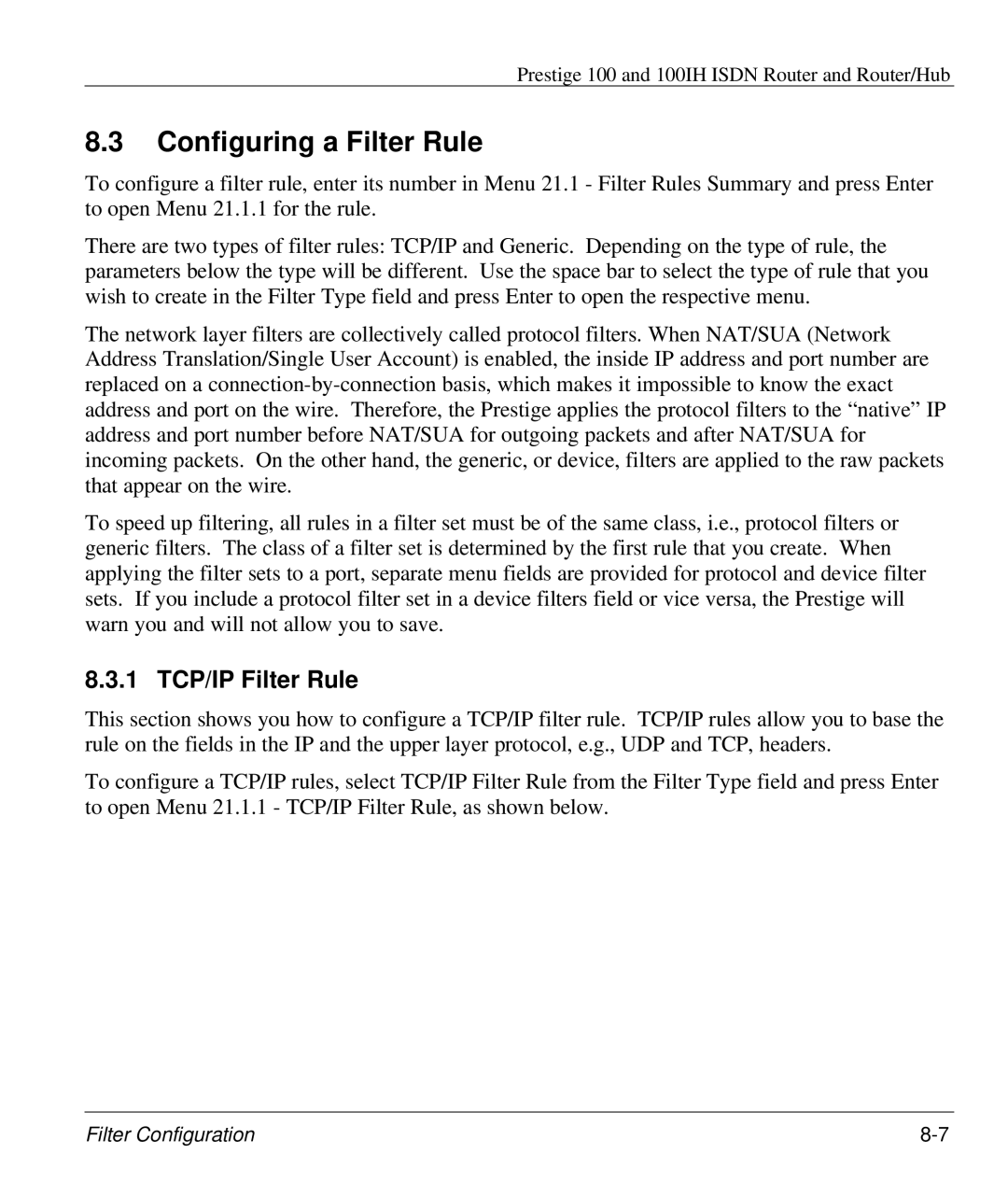
Prestige 100 and 100IH ISDN Router and Router/Hub
8.3Configuring a Filter Rule
To configure a filter rule, enter its number in Menu 21.1 - Filter Rules Summary and press Enter to open Menu 21.1.1 for the rule.
There are two types of filter rules: TCP/IP and Generic. Depending on the type of rule, the parameters below the type will be different. Use the space bar to select the type of rule that you wish to create in the Filter Type field and press Enter to open the respective menu.
The network layer filters are collectively called protocol filters. When NAT/SUA (Network Address Translation/Single User Account) is enabled, the inside IP address and port number are replaced on a
To speed up filtering, all rules in a filter set must be of the same class, i.e., protocol filters or generic filters. The class of a filter set is determined by the first rule that you create. When applying the filter sets to a port, separate menu fields are provided for protocol and device filter sets. If you include a protocol filter set in a device filters field or vice versa, the Prestige will warn you and will not allow you to save.
8.3.1 TCP/IP Filter Rule
This section shows you how to configure a TCP/IP filter rule. TCP/IP rules allow you to base the rule on the fields in the IP and the upper layer protocol, e.g., UDP and TCP, headers.
To configure a TCP/IP rules, select TCP/IP Filter Rule from the Filter Type field and press Enter to open Menu 21.1.1 - TCP/IP Filter Rule, as shown below.
Filter Configuration |
